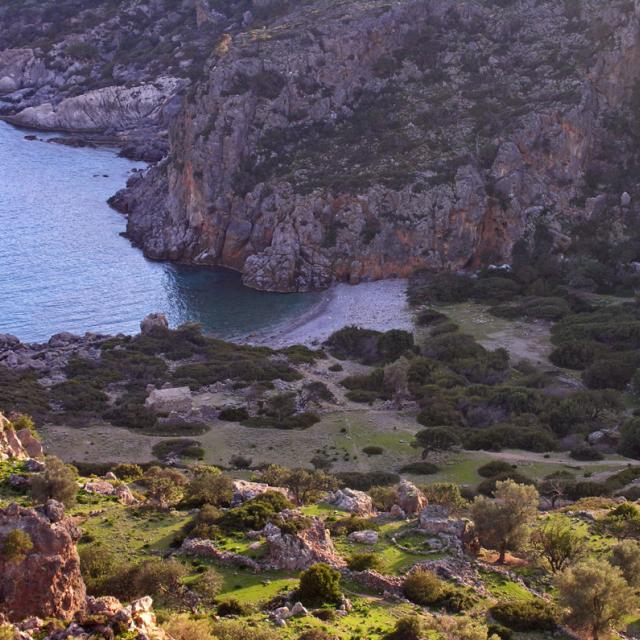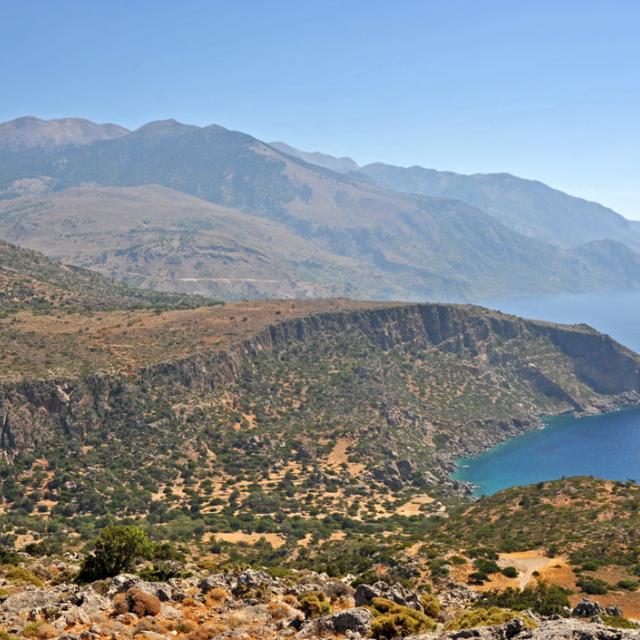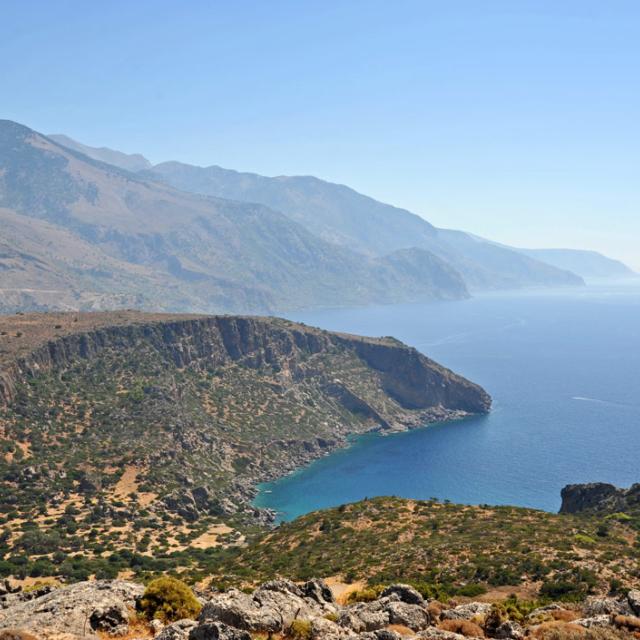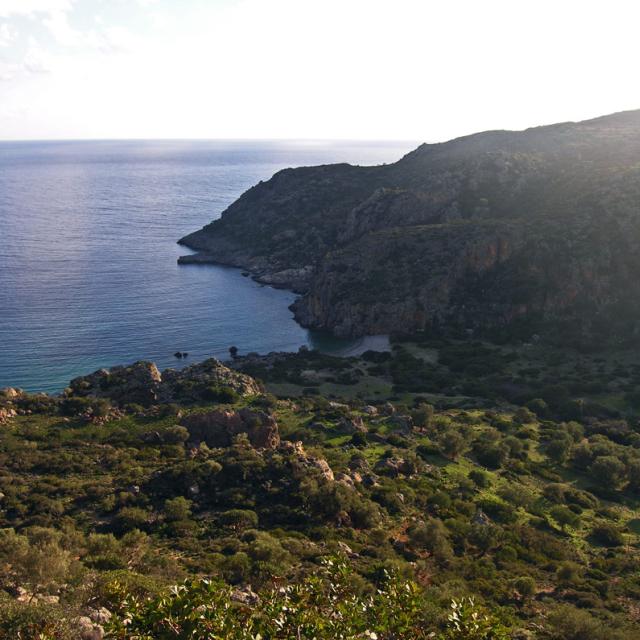Lissos was the port of ancient Elyros. Its pre-Hellenic name suggests that it was inhabited well before the Doric period. The natural harbour and the medicinal springs present helped Lissos flourish to a great extent, mainly during the Doric, the Hellenistic and the Roman period.
Having established a powerful commercial and a fishing fleet, and featuring a sanctuary of Asklepios, the town managed to accumulate wealth, and was one of the few towns of Crete which minted gold coins.
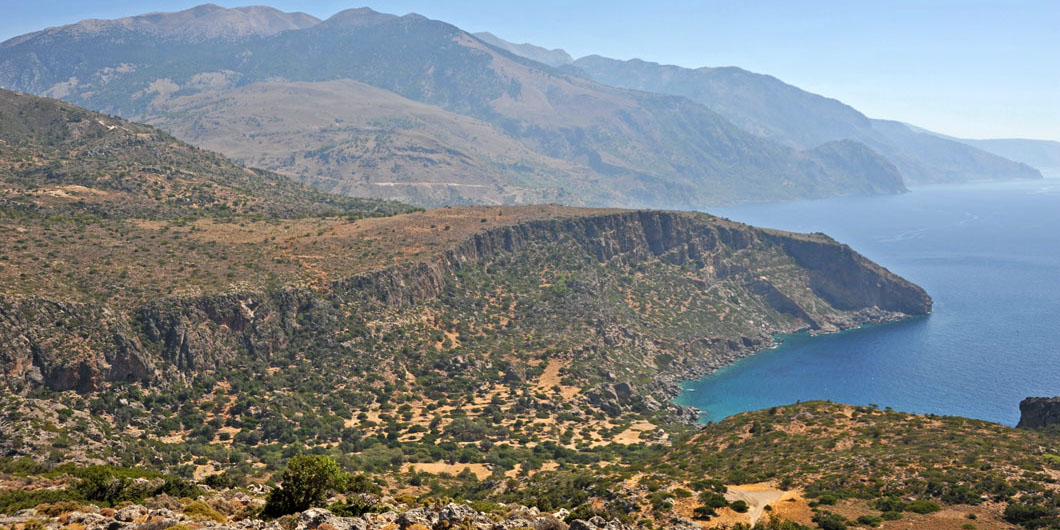
The therapeutic waters of the spring, which still exists today in the location of Temenia, prompted the founding of the Asklepieion (= sanctuary of Asklepiós) of the town.
The temple, which was of the Doric order, was built of limestone. A large number of statuettes was unearthed during the excavation, a fact which suggests the importance of the sanctuary. These statuettes, most of which were found headless, can be seen today in the Archaeological Museum of Chania, together with a severely fragmented statue of Asklepios.
These 20 statuettes that were found were mainly offerings to Asklepios, to Hygeia and to Plouton. A gold snake, which bears the inscription AΣKΛAΣ (ASKLAS), from which the name Asklepios (= god of the snakes) derives, is counted among the most remarkable finds from the site.
It should be noted here that live snakes were kept in all Asklepieia; it is believed that they took active part in certain rituals, continuing an age-old tradition of the Minoan religion.
The floor of the temple was covered with mosaics of exceptional craftsmanship, where meanders and various animals were represented.
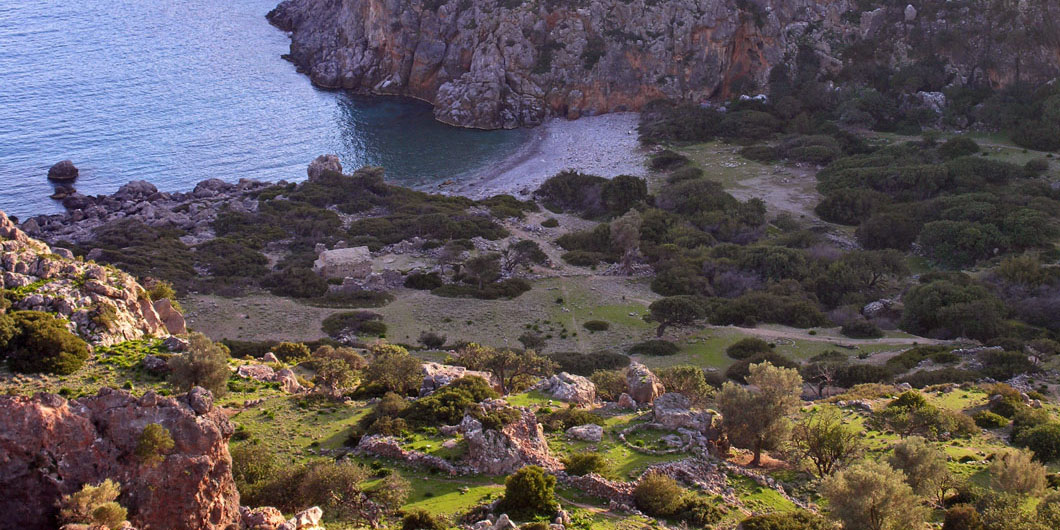
Also, the existence of a theatre, an aqueduct and hot baths indicates the great flourishing of the town in the Roman period. This prosperity possibly continued in the Byzantine years, considering the large size of two Early Christian basilicas which stood in the area.
A chapel of Agios Kirikos was later built where the Holy Bema (= a platform before the entrance to the adyton of an Orthodox church) of one of the basilicas existed; it appears to have measured 22,8 X 11 metres, and it celebrated on July 15th.
It is believed that Lissos was deserted after the liberation of Crete from the Arab dominion.

